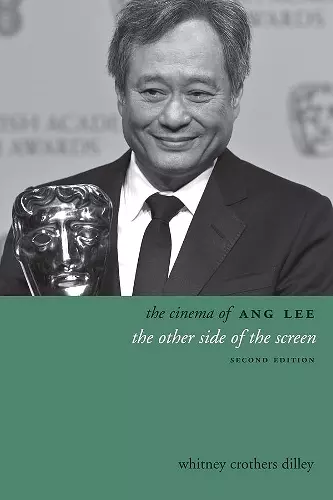The Cinema of Ang Lee
The Other Side of the Screen
Whitney Crothers Dilley author
Format:Hardback
Publisher:Columbia University Press
Published:27th Jan '15
Currently unavailable, and unfortunately no date known when it will be back

Through suggestive readings of gender and identity, this book explores the international appeal of an acclaimed contemporary director. The author has revised the book's introduction to reflect Ang Lee's new films and their global reception and adds to the text a consideration of new developments in Chinese film, recent critiques of Brokeback Mountain (2005), and chapters on Lust/Caution (2007), Taking Woodstock (2009), and Life of Pi (2012).
Suggestive readings of gender and identity explore the international appeal of Ang LeeBorn in Taiwan, Ang Lee is one of cinema's most versatile and daring directors. His ability to cut across cultural, national, and sexual boundaries has given him recognition in all corners of the world, the ability to work with complete artistic freedom whether inside or outside of Hollywood, and two Academy Awards for Best Director. He has won astounding critical acclaim for Crouching Tiger, Hidden Dragon (2000), which transformed the status of martial arts films across the globe, Brokeback Mountain (2005), which challenged the reception and presentation of homosexuality in mainstream cinema, and Life of Pi (2012), Lee's first use of groundbreaking 3D technology and his first foray into complex spiritual themes. In this volume, the only full-length study of Lee's work, Whitney Crothers Dilley analyzes all of his career to date: Lee's early Chinese trilogy films (including The Wedding Banquet, 1993, and Eat Drink Man Woman, 1994), period drama (Sense and Sensibility, 1995), martial arts (Crouching Tiger, Hidden Dragon, 2000), blockbusters (Hulk, 2003), and intimate portraits of wartime psychology, from the Confederate side of the Civil War (Ride with the Devil, 1999) to Japanese-occupied Shanghai (Lust/Caution, 2007). Dilley examines Lee's favored themes such as father/son relationships and intergenerational conflict in The Ice Storm (1997) and Taking Woodstock (2009). By looking at the beginnings of Lee's career, Dilley positions the filmmaker's work within the roots of the Taiwan New Cinema movement, as well as the larger context of world cinema. Using suggestive readings of both gender and identity, this new study not only provides a valuable academic resource but also an enjoyable read that uncovers the enormous appeal of this acclaimed director.
Dilley not only provides an in-depth overview of Ang Lee's contribution to film, but also gives crucial contextualization for East-West film studies and theoretical approaches, as well as providing careful study of significant themes in Lee's personal life which molded him as a film director. This is an enormous amount of territory to cover. Dilley does it well with scholarly rigor in a tone of exploration and wonder. -- Barbara Kline, Seattle Pacific University The Cinema of Ang Lee is the most comprehensive study of Ang Lee and all the films directed by him to date. It tells the extraordinary story of a Taiwan-born Chinese director within the global contexts of diaspora, transnationalism, Chinese-language cinema, American cinema, and world cinema. The book is full of interesting details, and is written in a lucid, accessible style that will be appreciated by readers and moviegoers interested in this director. -- Sheldon Lu, University of California at Davis Writing about film is no easy task and writing about great film even harder. Ang Lee's films include not only three Academy Award winners, The Life of Pi, Brokeback Mountain, and Crouching Tiger, Hidden Dragon, but also less familiar masterpieces like Lust|Caution, Ride with the Devil, The Ice Storm, and Eat Drink Man Woman. Whitney Dilley's study of Ang Lee's art is written with remarkable clarity, insight, and compassion. It is a model of fine film literature. -- Jerome Silbergeld, Princeton University Recommended. All readers. Choice
ISBN: 9780231167727
Dimensions: unknown
Weight: unknown
248 pages
second edition